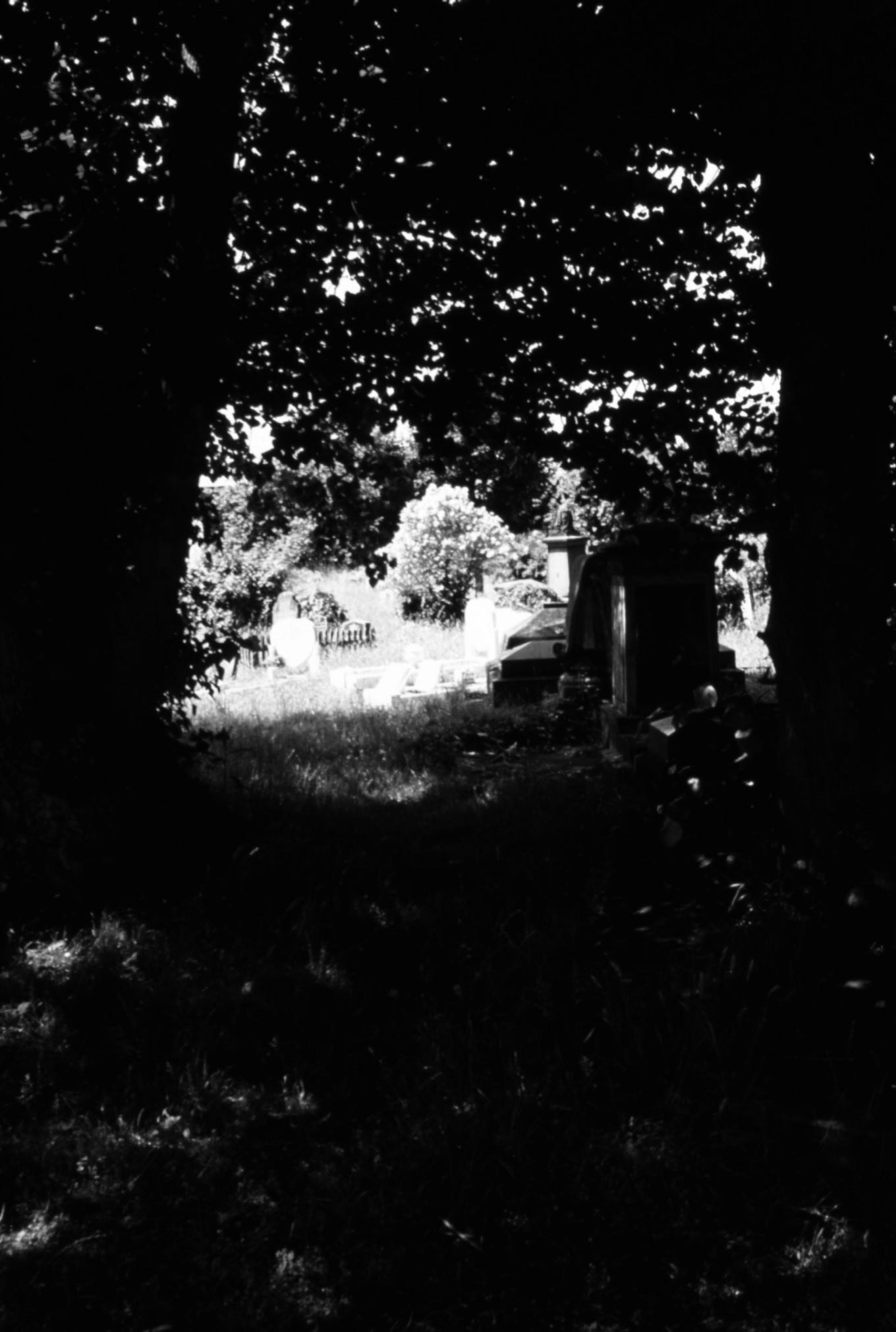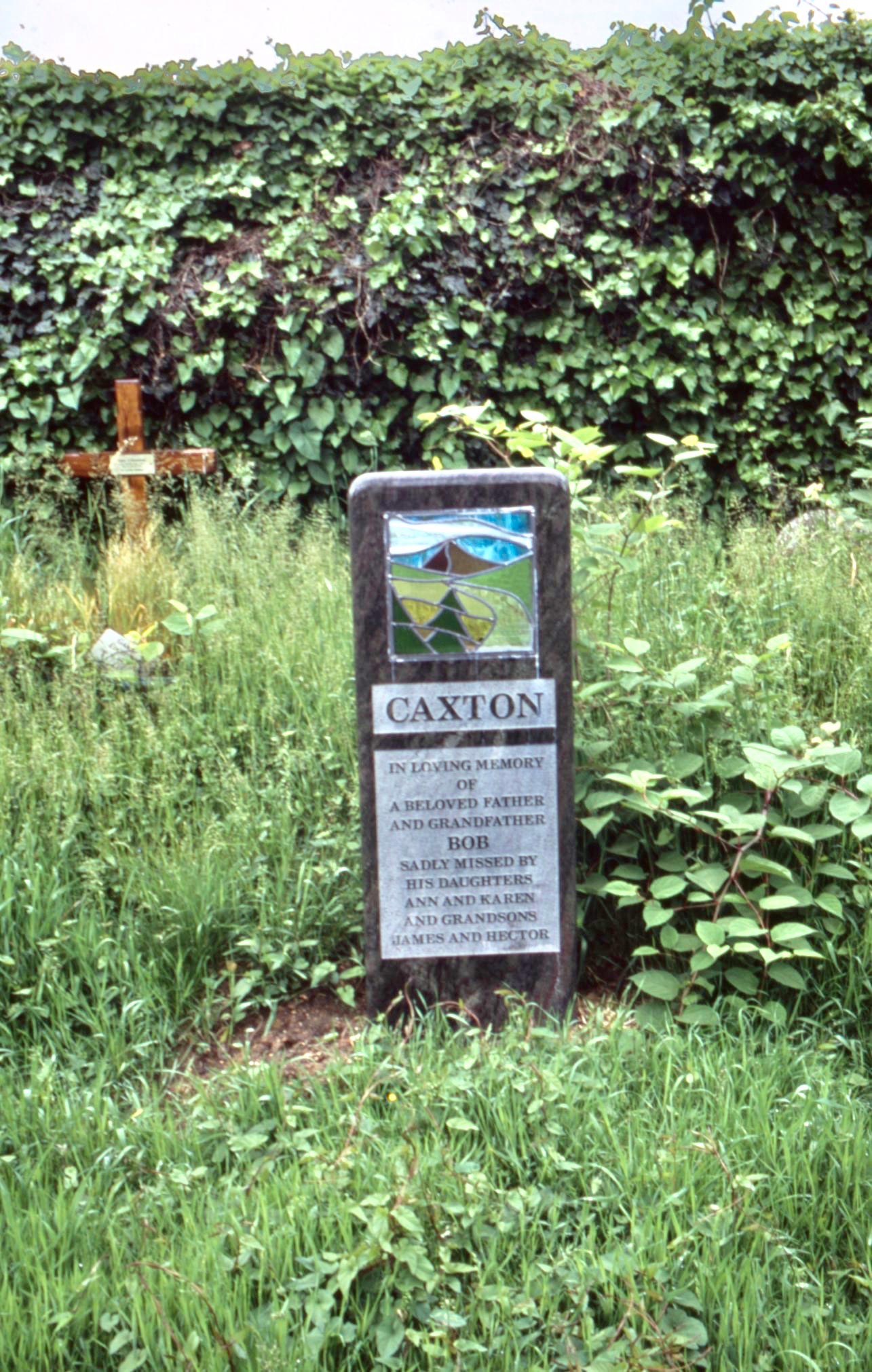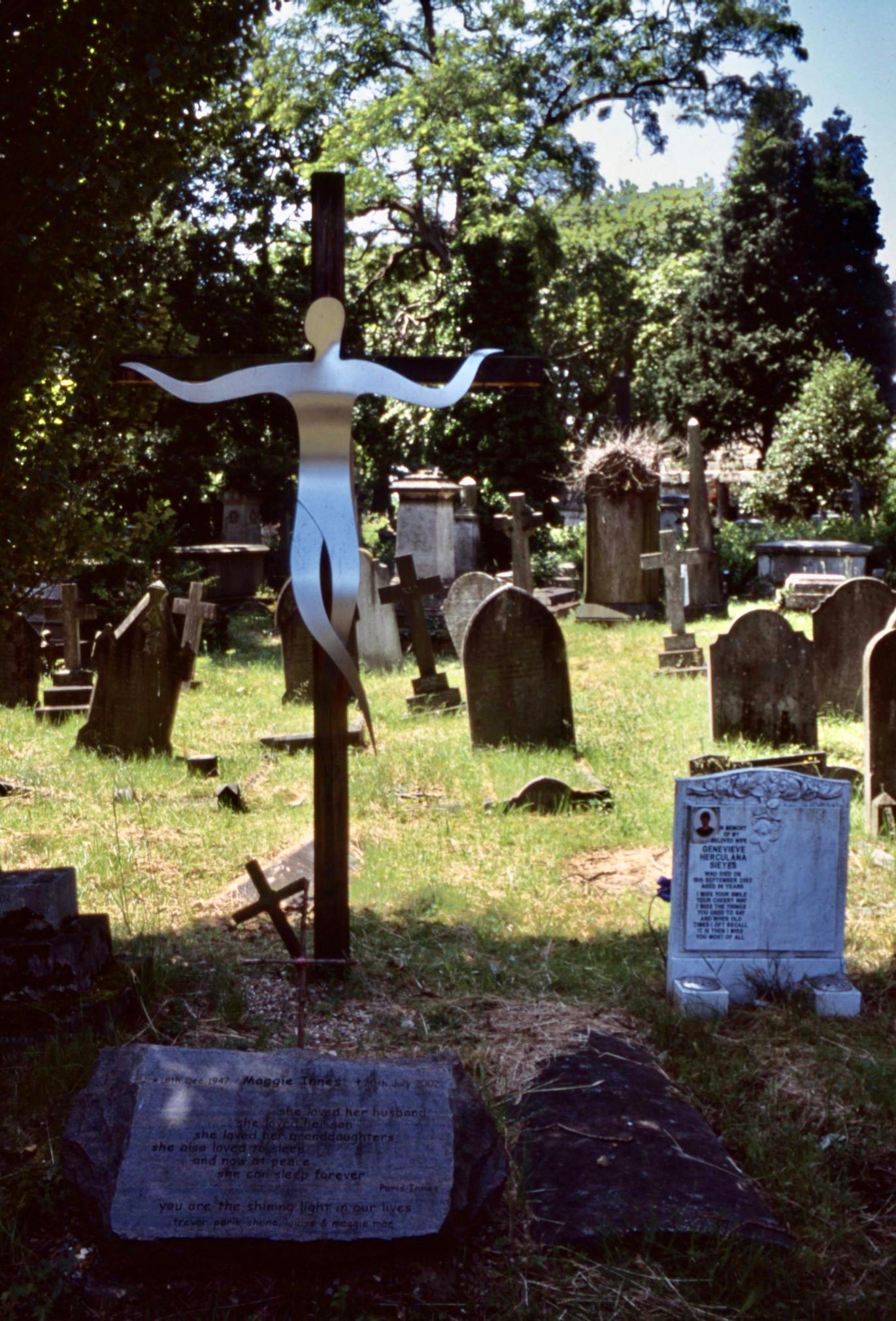This was another day of unrelenting gloom and rain, on which I scanned another batch of colour slides from





Kensal Green Cemetery in May 2008. Well, they all started out as colour slides before I converted some.


The first of these chapels within the grounds is Anglican; the second Non-conformist.


A single sorrowful sculpture sits atop the plinth dedicated to George and Mary Maugham; while William Holland’s Renaissance style sarcophagus is supported by stone griffons.
antiquesworld.co.uk provides this information about the firm began by William Holland furniture makers:
‘Holland and Sons Antique Furniture (1803 – 1942)
Holland and sons were extremely good cabinet makers and they specialised in fine quality furniture. This is why such pieces are so well collected today as if you buy antique furniture by these makers you know you are buying quality. This English furniture making firm was founded in 1803 by William Holland and by the middle of 1800s, Holland and sons was one of the main competitions to the furniture makers Gillows, one of the greatest English furniture producers in History.
Original they were cabinet makers and upholsterers called Taprelland Holland but by 1843 they changed to Holland and Sons with William Holland in control, a relative of the well known Regency architect Henry Holland.
The business soon started to expand quickly and by1851 they employed over 350 cabinet makers and by 1852 took on the prestigious firm of Thomas Dowbiggin of 23 Mount Street, London, who had previously made the state throne for Victoria’s Coronation. Holland and Sons worked successfully not only as furniture makers but also as undertakers and became responsible for the Duke of Wellington’s funeral.
William Holland has the firm expanding at a rapid rate and became so well known for its quality in cabinet making, they became cabinetmakers and upholsters to the Queen. Their first commission was for Osborne House in 1845, supplying furniture in the Queen’s favourite style of the time, the Louis XVI style from France. They continued to supply furniture for Osborne and gained further commissions for Windsor Castle, Balmoral and Marlborough House. Holland and sons also worked for many leading institutions such as the reform Club (we have also supplied the reform club with our antique furniture in the past), the British Museum and the new Houses of Parliament. They were part of many of the important international Exhibitions including London in 1862, Vienna in 1873 and Paris in 1867 and 1872. They gained worldwide fame for their magnificent designs and super quality in cabinetmaking right throughout the Victorian era. Holland and sons stayed as a family run business but sadly closed in 1942 when it fell on hard times due to the ever changing world of the time.’

A small girl is still adorned with flowers and a necklace.



Like other members of ‘The Magnificent Seven’; unlike modern municipal cemeteries, Kensal Green permits more contemporary tributes. Bob Caxton’s descendants have incorporated a stained glass panel into his stone; a sinuous cut metal figure is fixed to the crucifix standing over Maggie Jones; and Charlie O’Sullivan’s polished memorial bears his photograph and the Irish symbols of shamrock and harp.
This afternoon, having finished reading the first four chapters of
I embarked upon the task of scanning Charles Keeping’s superb illustrations as I work my way through Charles Dickens’s novel. In addition to the frontispiece above, entitled ‘Jerry, the manager of these dancing dogs’, a traditional Victorian street entertainment, I now reproduce
‘I found at my elbow a pretty little girl’ whose innate sadness the artist has seen;
and ‘The dwarf glanced keenly at all present’, depicted as evil personified.
This evening we dined on Jackie’s spicy pasta arrabbiata with which she drank Hoegaarden and I drank more of the Garnacha.


